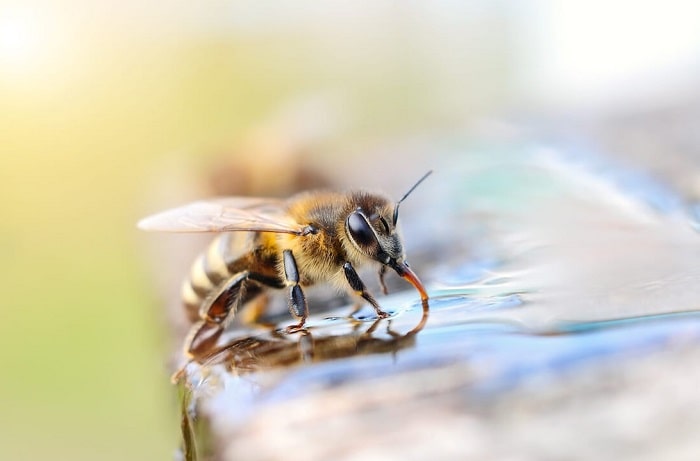If you have a bee colony, you are naturally invested in the health and vigor of those bees. There are a few reasons why you might want to augment their food source with sugar water. But it is crucial to understand what they are, when it’s a good time to feed them, and how. So, how to attract bees with sugar water?
When sugar water is good for bees
When you obtain a new colony of bees and they need a little assistance to get started. Because there is no stored food in their hive at the moment, giving them some sugar syrup can be beneficial.
When it is the dead of winter and the bees do not have enough stored food in their hive — and there are not any blossoms to feed them. Bees that run out of food can perish in a matter of days, and it is your responsibility to keep an eye on the situation to prevent this from happening.
Feeding bees sugar water
If bees have natural nectar or stored honey, do not feed them sugar water. If bees have easy access to a food supply, such as sugar water, they will not go out foraging for nectar, which they must work for. Because bees convert nectar into honey, if they become reliant on sugar water, their honey output will decline or cease entirely.
A regular supply of sugar water will not only impair the honey supply, but the bees may begin to store it alongside their honey, rendering the honey unfit to ingest.
- 6-8 extremely small holes should be punched in the lid of a canning jar or other airtight container. Make several tiny holes in the top of the lid with the tip of a framing nail or a similar small, sharp instrument. When feeding the bees, turn the jar upside down, and the bees will sip the sugar water through the holes.
- Sterilize the pot, container, and any equipment you’ll be using in bleach water. It is very important to make sure you kill any bacteria that could be living on the surface of the pot and the container that you will use. Bees are very susceptible to illness, so if you introduce bacteria into the hive, you could kill them.
- Give bees roughly 2 quarts (2 liters) of a 1:1 sugar and water solution to feed them in the early spring or for queen-rearing. Begin with 1 quart (1 liter) of water. Every few days, until natural nectar is available, replace the mixture.
- If you are feeding the bees in the late fall or winter, make a 2:1 sugar-to-water combination and give the bees 5-10 quarts (5-10 liters) per week. Start with around 2 quarts (2 liters) of water to make a 6 quart (6 l) mixture.
At the top of the hive, place the container upside-down on spacers. Remove the lid from the top of the beehive and insert two little wooden sticks inside. These will create a space between the hive and the jar’s top, allowing the bees to access the sugar water.
Adjust your feedings based on how quickly the bees consume the sugar water. Check the sugar water every 2-3 day if you are feeding the bees in the spring during queen-rearing, or once a week during cooler seasons. If there is any syrup left over, you may need to feed them less the following time.

>>> Read more: Best Honey Extractors Review 2021 – Manual And Electric Options
#3. Alternative to sugar water for bees
Bees are extremely sensitive to pesticides, so if you want to attract bees to your yard, use natural insect and weed control methods. To avoid nursery plants treated with insecticides, buy organic plants or grow your own.
Plant a variety of wildflowers and local plants in your garden. Bees need both pollen and nectar, so including a wide range of plants in your garden will help ensure they have the biodiversity they need. Try to find small, medium, and large flowers, and opt for varieties that thrive in your area to ensure your plants are hardy enough to support your beehive. Plants like lavender, oregano, and thyme can help bees fight off mites which may spread diseases to the colony.
Choose plants that bloom at various periods of the year. Your bees should have access to flowering plants from early spring through mid-autumn in order to be healthy. When selecting plants, attempt to schedule the flowering times so that they will last as many seasons as feasible.
Allow weeds to flourish in your garden. Wildflowers and weeds, particularly dandelions and clovers, can be incredibly beneficial to bees. If possible, choose a portion of your yard that you do not mow on a regular basis. These natural plants will not only support your beehives. But they will also attract wild bees from your area, allowing a diversity of bee species to thrive.
Conclusion
It is normal practice to feed sugar water to young bee colonies. It is also critical to understand when to cease feeding bees in the spring. Sugar water is deficient in nutrients that bees require to build their immune systems. When the honey supers are full honey saved for the winter, you should cease feeding the bees. In addition to feeding bees with homemade sugar water, you can give them access to natural sources.
Related Posts:
